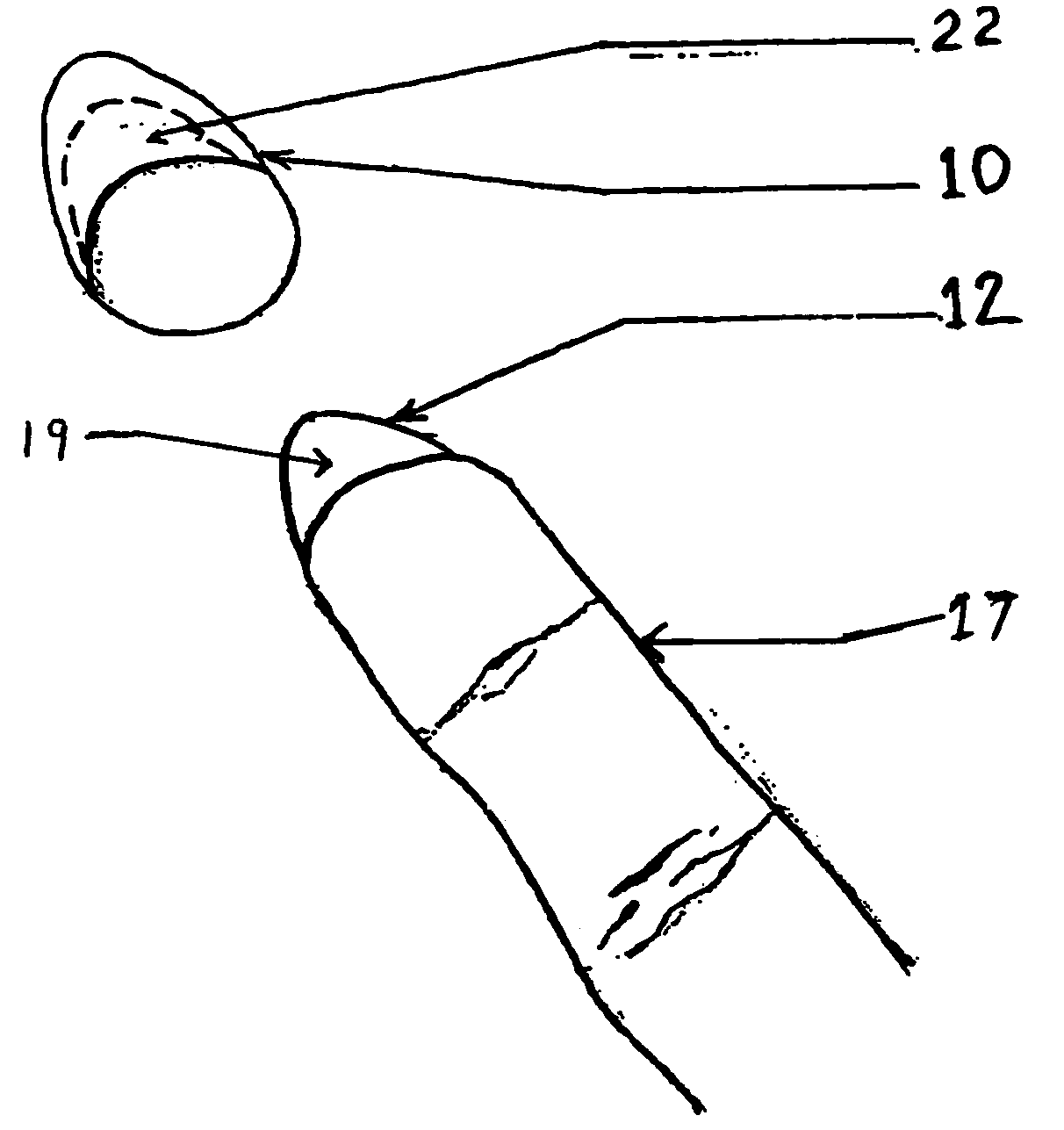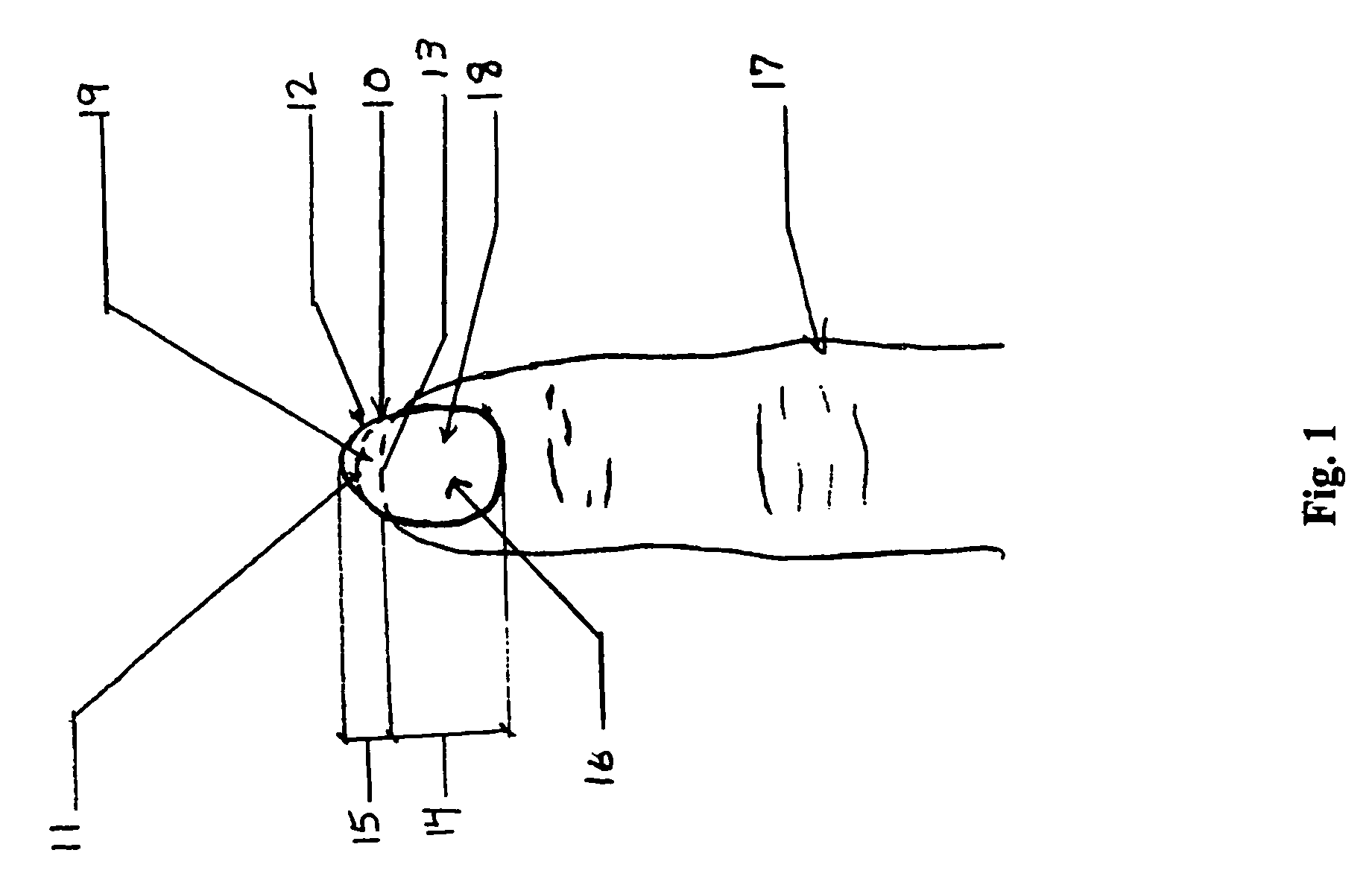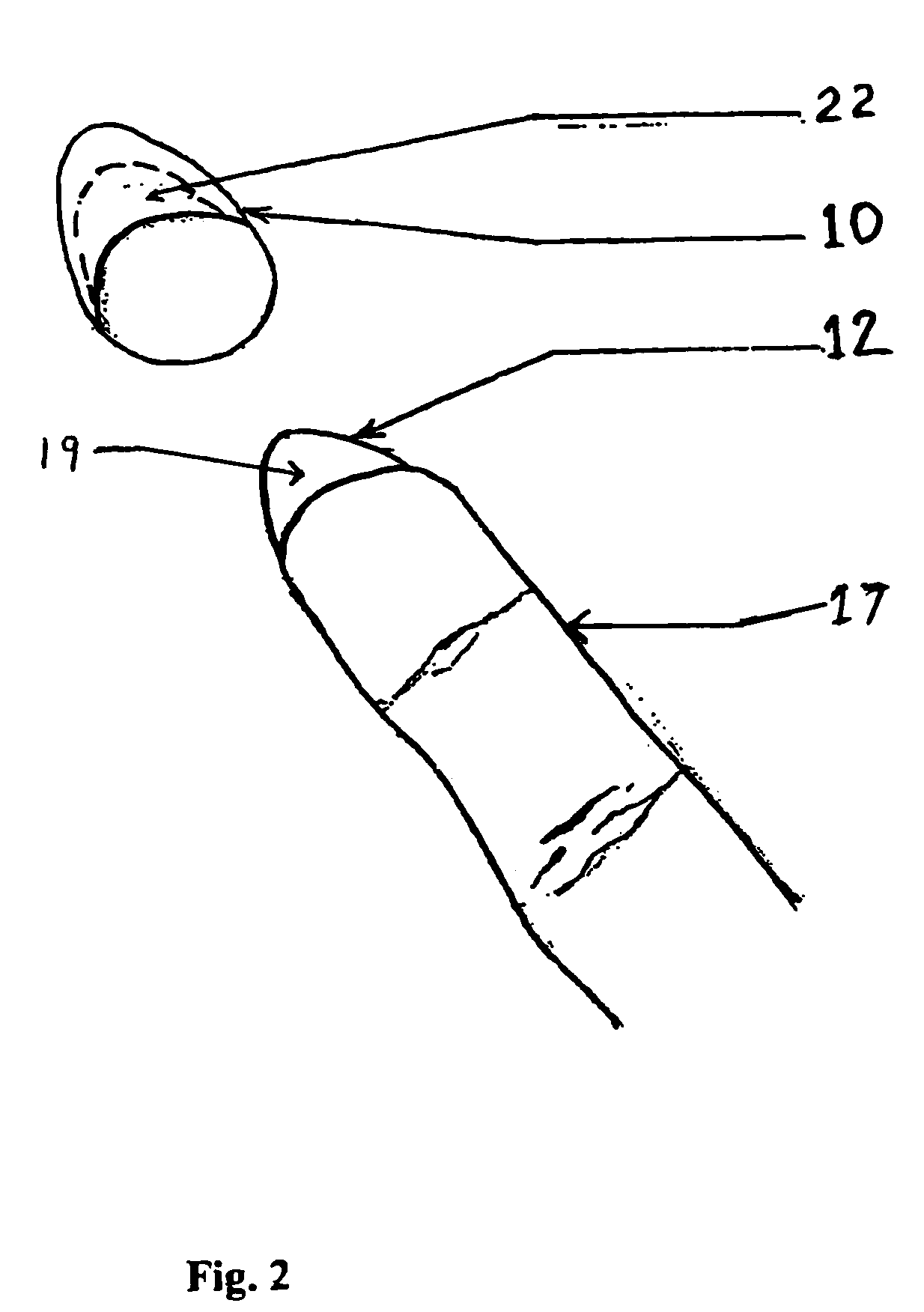Fingernail pick for stringed instruments
a stringed instrument and fingernail technology, applied in stringed instruments, instruments, musical instruments, etc., can solve the problems of difficulty in immediate nail repair, frequent, time-consuming and costly application of chemicals and/or other ingredients, and musicians in the above mentioned situations are often plagued by broken or cracked fingernails, etc., to achieve the effect of optimizing string activation
- Summary
- Abstract
- Description
- Claims
- Application Information
AI Technical Summary
Benefits of technology
Problems solved by technology
Method used
Image
Examples
Embodiment Construction
[0028]FIG. 1 is a top view of an exemplary preferred embodiment of the invention. As shown in FIG. 1, the fingernail pick 10 is a single part that is attachable to the fingernail 18 of the user's finger 17. The fingernail pick 10 includes a primary string contacting portion 15, an anchor portion 14 and a mounting portion (not shown). A cantilevered portion 19 of the fingernail 18 is an extension of the nail from the front edge 13 of nail plate 16 (the nail plate 16 is completely covered by anchor portion 14 in FIG. 1 and is therefore not viewable).
[0029]In a preferred exemplary embodiment of the fingernail pick 10, the primary string contacting portion 15 approximates the size and shape of the cantilevered portion 19 of the fingernail 18. The primary string contacting portion 15 extends beyond the cantilevered portion 19 of the fingernail.
[0030]In an exemplary embodiment, the primary string contacting portion 15 is removable from the anchor portion 14 which allows the fingernail pic...
PUM
 Login to View More
Login to View More Abstract
Description
Claims
Application Information
 Login to View More
Login to View More - R&D
- Intellectual Property
- Life Sciences
- Materials
- Tech Scout
- Unparalleled Data Quality
- Higher Quality Content
- 60% Fewer Hallucinations
Browse by: Latest US Patents, China's latest patents, Technical Efficacy Thesaurus, Application Domain, Technology Topic, Popular Technical Reports.
© 2025 PatSnap. All rights reserved.Legal|Privacy policy|Modern Slavery Act Transparency Statement|Sitemap|About US| Contact US: help@patsnap.com



